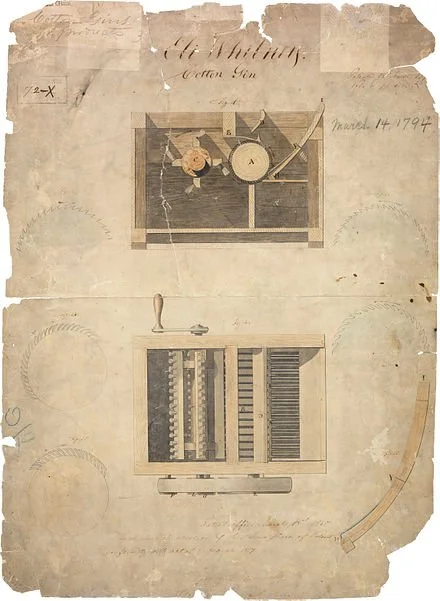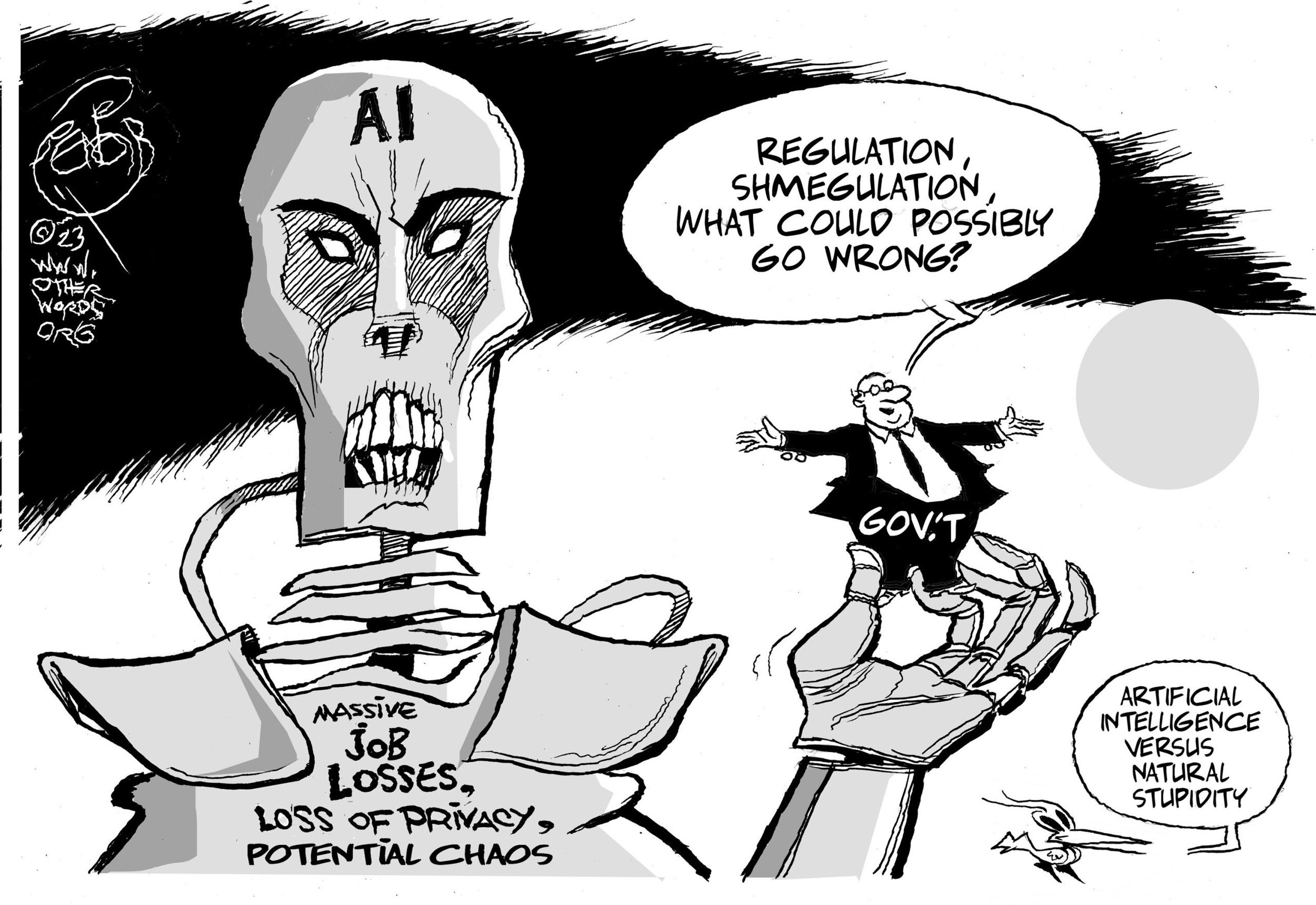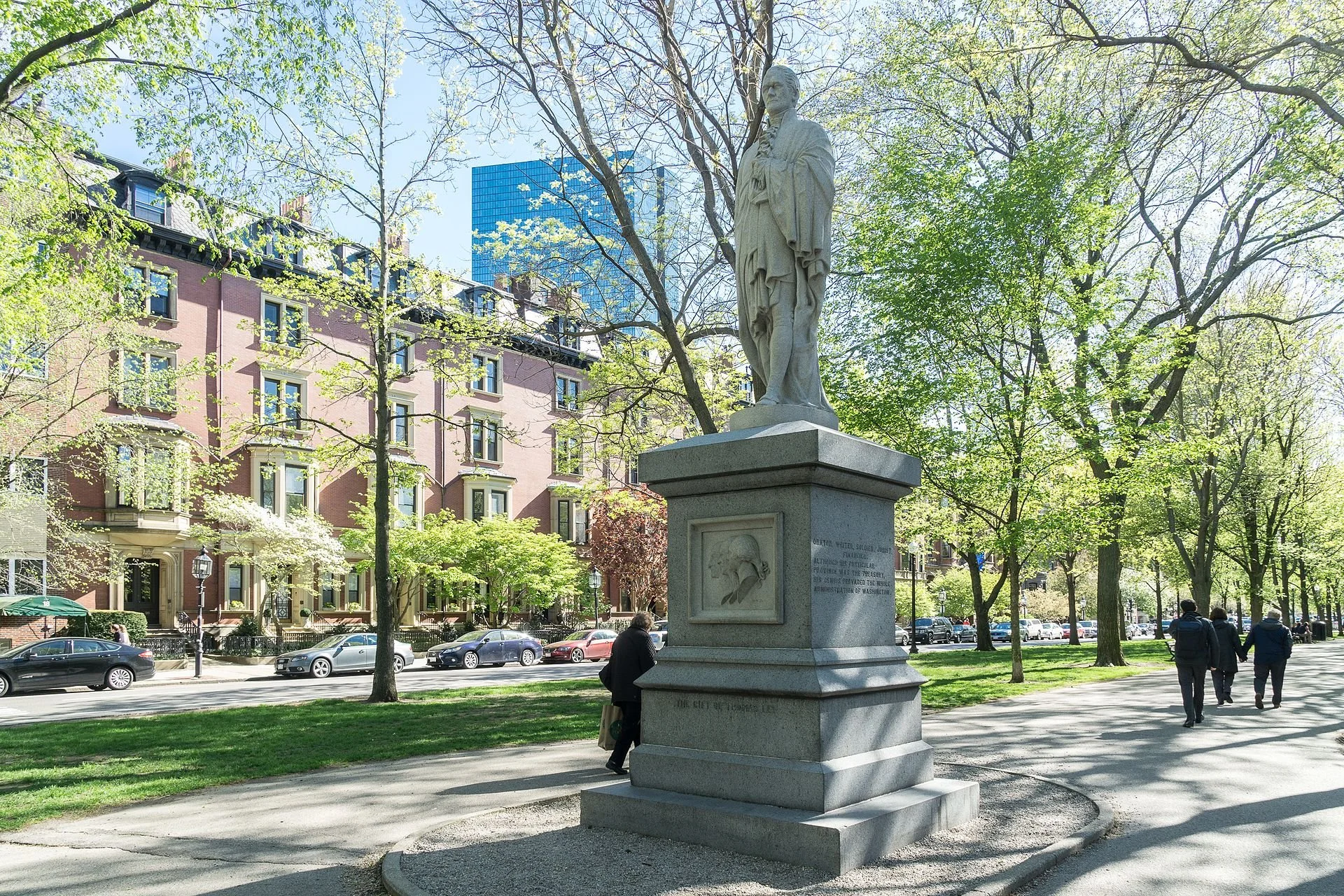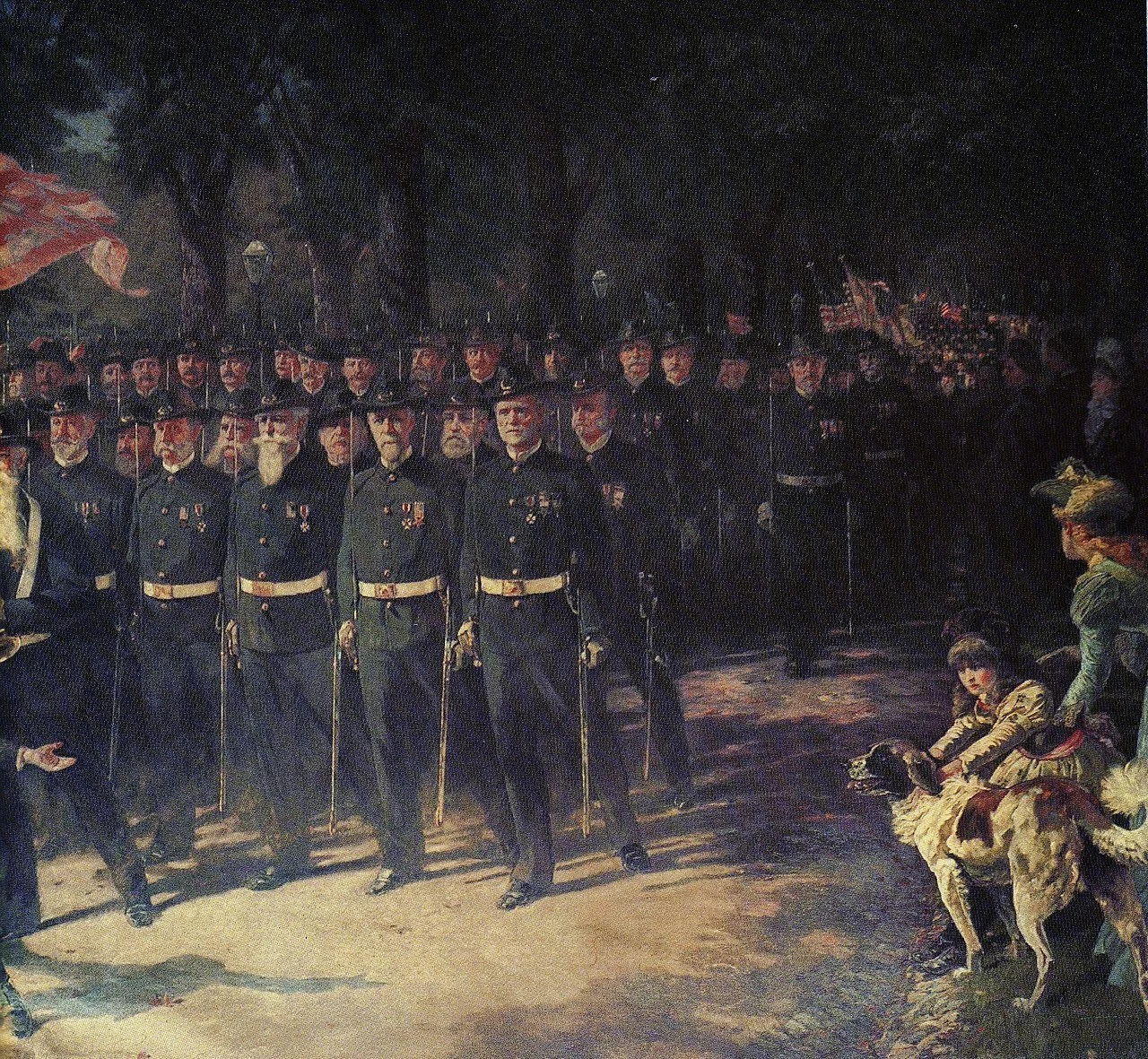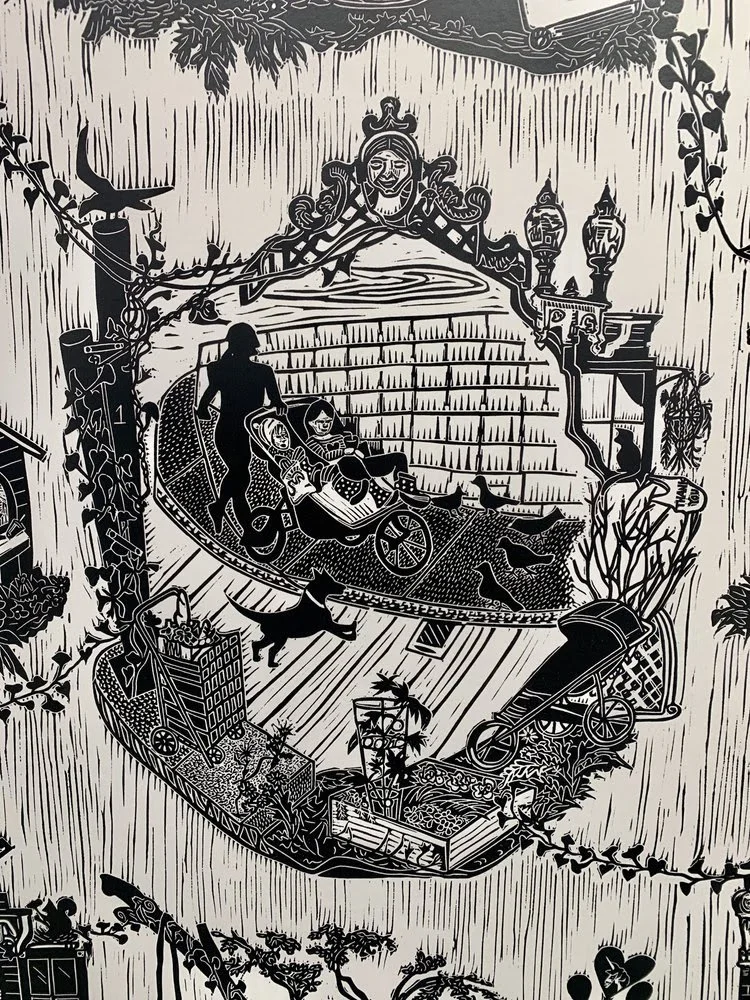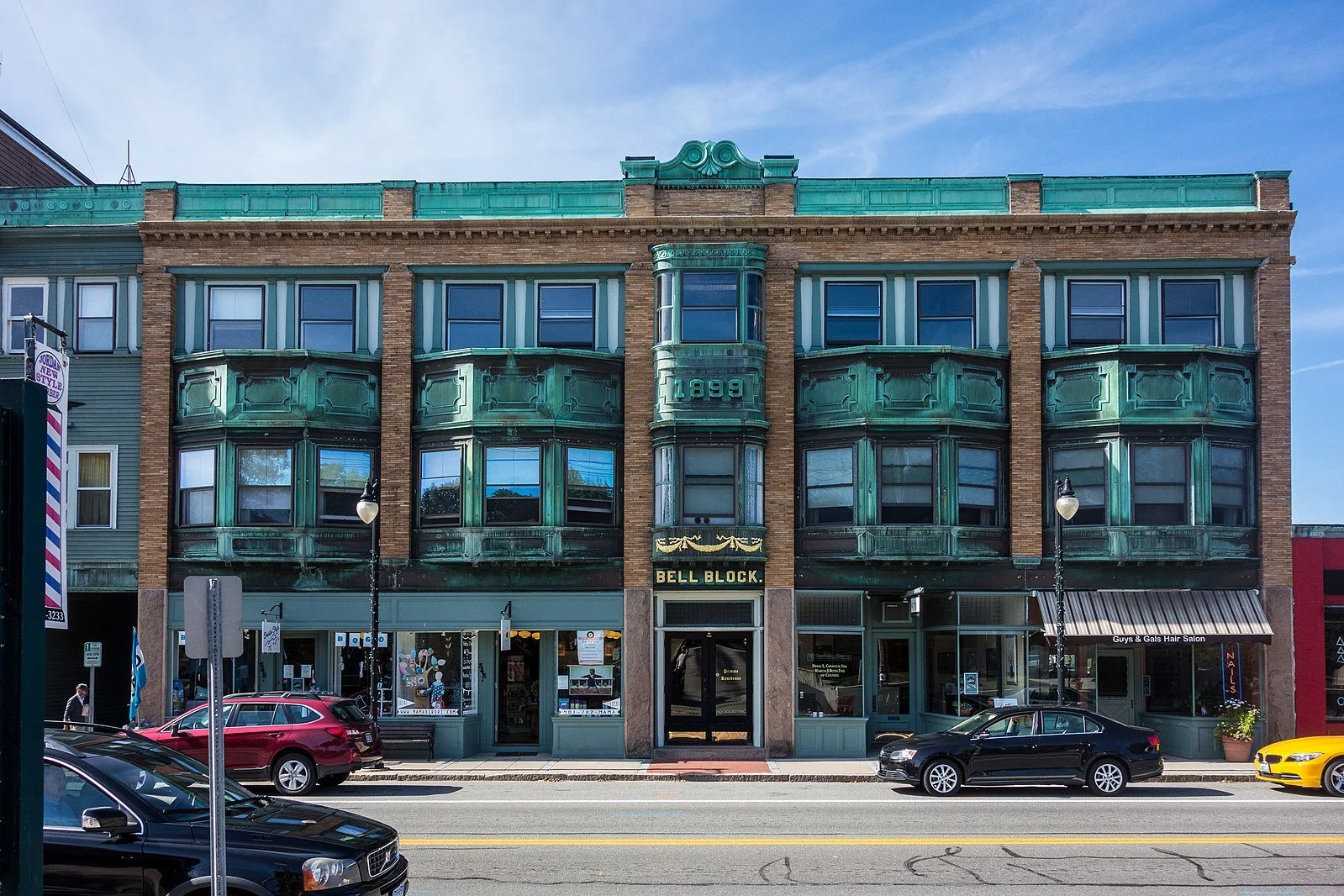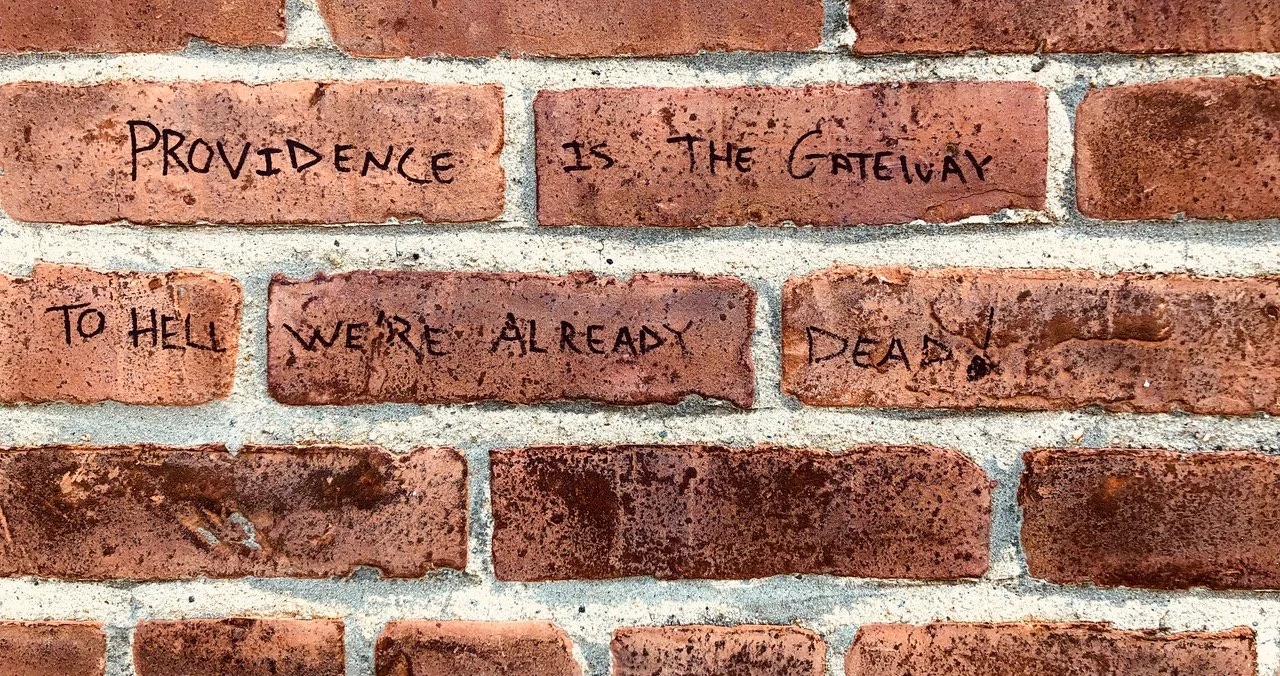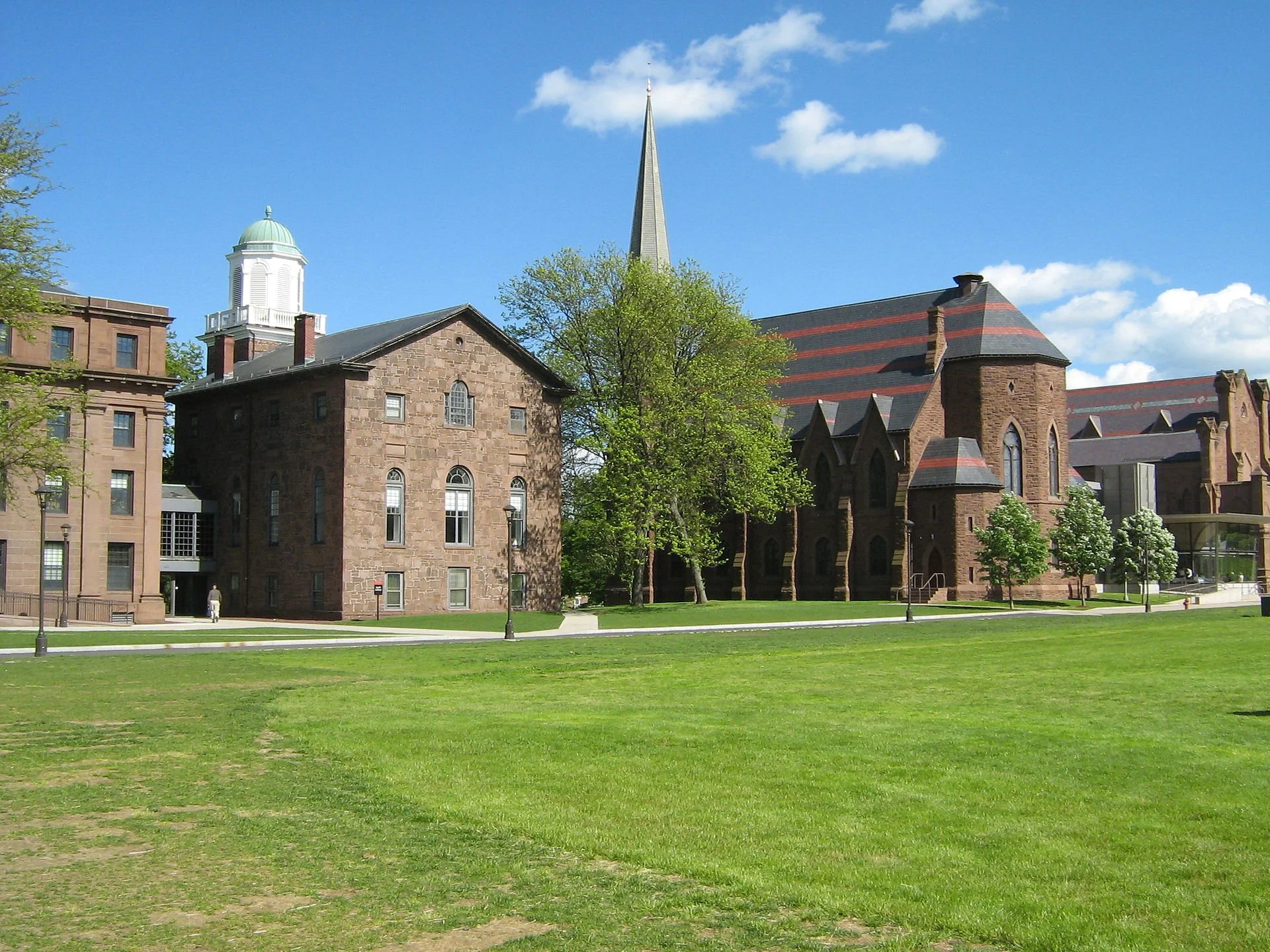
Chris Powell: Remediate Conn.’s present before repudiating its past
At the Salem Witch trials
Connecticut inventor Eli Whitney's (1765-1825) original cotton gin patent, dated March 14, 1794. The invention lead to a huge expansion of slavery and thus to the Civil War.
MANCHESTER
While the new state budget wasn't yet complete, with several big issues waiting to be settled, the other day the state House of Representatives found time to pass a resolution that more or less repudiated and apologized for the conviction and execution of people alleged to have been witches in the Connecticut colony 400 years ago.
Advocates of the resolution said it was needed to assuage the feelings of the distant descendants of the wrongly prosecuted, though if there really are any people with feelings so tender, they need a legislative resolution less than round-the-clock sedation.
For does anyone in Connecticut consider witchcraft convictions from centuries ago to be a mark of shame against anyone alive today?
While the witchcraft resolution was being considered, Connecticut's news was full of reports about matters whose shame is contemporaneous -- like the miserable educational performance of children from racial minorities, the growing violence in the cities, the mental illness and drug addiction of most of the offenders being released from prison, the rise in poverty and homelessness, and worsening social disintegration that suggests the state has become the set of a zombie movie.
The General Assembly has yet to repudiate or apologize for any of those things. For doing something about them would require profound changes in government policy and probably substantial appropriations, even as posturing self-righteously with a resolution of no practical help to anyone is free.
But more discouraging than the legislature's propensity for stupid posturingis the growing presumption that inspired and advanced the witchcraft resolution and inspires other claims for apologies or reparations -- the presumption that the past is so bad that it should shame everyone in the present.
Of course, some shameful things from long ago have present consequences that may be remediable. The disproportionate failure of students from minority groups may be considered the consequence of slavery, though slavery ended 160 years ago. It may be considered the consequence of prejudicial policies that ended 50 years ago, though far more recent policies may be at fault, policies no one in authority cares to question.
In any case the natural order has been for mankind to advance over long periods -- to gain knowledge, wisdom, and decency so that, for example, prosecutions for "familiarity with the Devil" are understood as unjust and based on the superstition and irrational fear inherent in ignorance.
That society improves gradually used to be understood as what was called the ascent of man. Painful as that ascent sometimes has been, ascent it was, and no shame attaches to those who did not participate in old injustices, a point that the opponents of the House resolution on witchcraft tried to make.
Besides, once society begins apologizing for the mistakes of the distant past, there may be no end to it even as its only practical effect will be to provide distraction from the mistakes of the present, just as the witchcraft resolution has done.
xxx
In a desperate attempt to regain ratings a few weeks ago, CNN partnered with former President Donald Trump in televising a public forum in New Hampshire that was packed with Trump supporters while hostile questions were posed to Trump by reporter Kaitlan Collins.
Running for president for a third time, Trump got exactly what he wanted -- another chance to behave outlandishly, call names, and demonstrate the demeanor that has troubled even people who favored some of his administration's policies.
The audience in New Hampshire loved it, providing more evidence that nothing disgraceful, from mere lies to graft to sexual assault, can hurt Trump with his base. As he discovered with happy surprise when he began his first campaign for president in 2016, "I could stand in the middle of Fifth Avenue and shoot somebody and I wouldn't lose any voters."
Trump is the embodiment of the contempt our government increasingly deserves.
Responding to the CNN broadcast, President Biden asked the country: "Do you want four more years of that?" But seeking re-election, the doddering and gaffe-producing Biden, a tool of wokeism, is himself why many people might choose four more years of Trump.
Chris Powell is a columnist for the Journal Inquirer, in Manchester, Connecticut. (CPowell@JournalInquirer.com)
Utilitarian interior
Acrylic on canvas painting from Susan Graseck’s series “Celebrating Barns,’’ in the group show, with Michael Manni and Kate Chute, titled “Exploring Edges,’’ at the Providence Art Club through June 16.
Rescue the Cape by rail
The Bourne Bridge, over the Cape Cod Canal, with the Cape Cod Canal Railroad Bridge in the distance. The Bourne Bridge mostly serves drivers coming from the west.
The Sagamore Bridge, which mostly serves drivers coming from the north, especially from Greater Boston
— Photo by Matt H. Wade.
Adapted from Robert Whitcomb’s “Digital Diary,’’ in GoLocal24.com
The narrow Bourne and Sagamore bridges, the only ways to drive to and from Cape Cod, were built back in the ‘30s and need to be replaced; they’re approaching being dangerous to drive on. Massachusetts Department of Transportation experts like the idea of replacing them with two sets of twin bridges. From an engineering standpoint, that sounds like a good idea. Let’s hope that adequate federal funds will be made available to do this.
But it’s unlikely that the new bridges would reduce traffic congestion on the Cape itself. Indeed, they could increase it by “smoothing” traffic over the canal, thus sending more drivers onto the skinny peninsula’s Route 6 (one long parking lot on summer weekends) and Route 28, some of whose traffic goes to ferry service to Martha’s Vineyard and Nantucket. (We generally stay away from the Cape from Memorial Day to after Labor Day, though we have a few relatives there.)
What would help save what’s left of the fragile, overbuilt, now mostly suburban Cape Cod is much more passenger rail service as an alternative to driving, including train stations close to the most popular summer places.
Let’s hope that whatever replacement spans go up are beautiful, befitting the spectacular setting of the world’s widest sea-level canal, with its dramatic bluffs.
Beech tree disease imperils forest ecosystem
American beech tree
— Photo by Jean-Pol GRANDMONT
From ecoRI News (ecori.org) article by Mike Freeman
Beech leaf disease, which has devastated northern hardwood forests since its discovery in Ohio in 2012, has spread throughout Rhode Island’s beech trees.
“It would change the whole forest ecosystem if they go,” said Heather Faubert, director of the University of Rhode Island’s Plant Protection Clinic. “We know what’s infected them but don’t know yet how it spreads, only that it spreads very quickly. It was first identified in Ashaway in 2020 and is now statewide.”
The disease is infecting beech trees in all New England states except Vermont, and was first detected in Connecticut in 2019.
Faubert’s general description tracks the terrible template that has wiped out or is en route to wiping out several native North American tree species. Details differ, but the plot never changes: People notice dying trees, a cause is identified, swaths of forest succumb as more becomes known, then to various effects preventative, palliative, or restorative measures are taken, often in combination. American chestnut exists on life support, American elm is greatly diminished, and currently eastern hemlock, the entire ash genus, and now American beech are all in dire peril.
As Faubert noted, what exactly causes beech leaf disease (BLD) and how it spreads are currently unknown, though the critical vector is Litylenchus crenatae mccannii, a nearly microscopic nematode, or worm, that feeds on beech leaves.
To read the whole article, please hit this link.
Maine lushness
"Boothbay Harbor Botanical Gardens" (oil on panel), by Louis Guarnaccia, at Bayview Gallery, Brunswick, Maine.
David Warsh: Hamilton, the Fed and the debt-ceiling crisis
Statue of Alexander Hamilton, by William Rimmer, on Commonwealth Avenue, Boston
— Photo by Kenneth C. Zirkel
SOMERVILLE, Mass.
This column, “Economic Principals,’’ was founded as a Boston Globe newspaper column, in 1983, on the premise that most of the important action in economic policy took place in universities – not just departments of economics and history, but in other social- sciences departments as well, and in schools of law, business, and government.
Quacks thrived in the days immediately after Ronald Reagan’s 1980 presidential victory, though his administration before long began to exhibit great good sense, as if to illustrate my contention. And while nothing I have learned since has changed my mind, the column’s predicate has occasionally caused him to overlook some exceptional journalists along the way.,
One such is John Steele Gordon, author of Hamilton’s Blessing: The Extraordinary Life and Times of Our National Debt (Walker, 1997) A revised edition appeared in 2010. The book is of special interest in current circumstances – the crisis over an attempt to impose a limit on the government’s borrowing capacity in exchange for promises of future cuts in spending on social-welfare programs.
Alexander Hamilton has become a celebrity since then, thanks to Lin-Manuel Miranda and another exceptional journalist, Ron Chernow, on whose biography of Miranda’s smash-hit musical , Hamilton, was based, and for good reason. The Caribbean-born Hamilton was the only Founding Father except Benjamin Franklin not endowed by birth with privilege (“the bastard brat of a Scotch peddler,” John Adams called him). Moreover, having grown up abroad, he possessed no fundamental loyalty to any one of the 13 colonies; he was, instead, a nationalist. Above all, Hamilton was a prodigy.
After serving as George Washington’s aide-de-camp during the War of Independence, he helped lead the battle to dismantle the Articles of Confederation. Once the new Constitution was adopted, Washington named him treasury secretary, and, in short order, Hamilton assembled much of the fiscal and monetary machinery of the new republic. His program had three main struts.
He nationalized the obligations of the states, incurred during the seven years of war. “A national debt” he wrote to a friend, “if it is not excessive, will be to us a national blessing.” He established taxes to reliably pay those debts: at first, tariffs on imported goods; when those revenues were insufficient, sales taxes on consumption goods, including whiskey. Finally, he successfully lobbied to create a Bank of the United States, modeled on the Bank of England, owned by private banks in partnership with the federal government, to issue currency and to assure its reliability; and to oversee the banking industry in general.
In 1804, Hamilton was killed by Aaron Burr in a duel. A dozen years later, the charter First Bank of the United States was allowed to expire. The Second Bank of the United States replaced it, but its charter, too, was allowed to lapse, in 1836, after a battle with President Andrew Jackson.
The National Banking Act of 1863 established the Office of the Comptroller of the Currency and preserved the North’s ability to borrow against “the full faith and credit of the United Sates, during the Civil War (as described in Ways and Means: Lincoln and his Cabinet and the Financing of the Civil War (Penguin, 2022), by Roger Lowenstein, another exceptional journalist.)
Only after the Panic of 1907, in which the American banking system required rescue by a syndicate organized by J.P. Morgan, was Hamilton’s original proposal smuggled back into law, in the form of the Federal Reserve System. Had the 20th Century version been properly named, as Hamilton intended, the Fed’s partnership with the Treasury Department might be better understood today.
The Treasury borrows money from willing lenders all over the world – that is, it accepts deposits and issues bonds and bills in return, on behalf of the federal government. The Fed is among its customers, buying or selling those government securities as a means of conducting monetary policy by raising and lowering interest rates as need be. Exchanges rates fluctuate based on that monetary policy, making the U.S. dollar the preferred currency of global markets.
By threatening the Treasury Department’s ability to borrow, Congress is tampering with the trustworthiness of the system itself. The root of the domestic argument has to do with the purposes for which the government borrows and spends the money – to defend the nation and make war, to finance its system of social welfare, or simply to keep the bank of the Fed running smoothly. The journalist Gordon writes:
In the 1860s we used the national debt to save the Union. In the 1930s we used it to save the American economy. In the 1940s we used it to save the world. So surely Hamilton was right, and the American national debt has been an immense national, indeed global, blessing. But is it still? Or is it now a crippling curse?
In short, it is the second strut of Hamilton’s program that is contested – the Treasury Department and its system of taxation. Income and expenditures are out of line and the imbalances have been growing for decades. Republicans generally favor cutting benefits – the Social Security and health-care systems. Democrats generally favor raising taxes.
While you are waiting for these issues to be addressed in next year’s elections, Hamilton’s Blessing is a beguiling introduction to the fundamental problem.
xxx
Speaking of which, a recent biography of Treasury Secretary Janet Yellen, Yellen: The Trailblazing Economist Who Navigated an Era of Upheaval (Harper, 2022), by Jon Hilsenrath, yet another exceptional journalist, has received less attention than it deserves.
Hilsenrath notes that Fed chair Ben Bernanke relied on an inner circle of advisers during the financial crisis of 2007-08, all in Washington or New York. As president of the Federal Reserve Bank of San Francisco, Yellen was not among them.
As treasury secretary, Yellen is at the center of the drama of the debt- ceiling negotiation, perhaps more central to the matter, as his principal adviser, than President Biden himself. The story of the formation of the character of this remarkable woman will make interesting reading long after she has left office.
David Warsh, a veteran columnist and an economic historian, is proprietor of Somerville-based economicprincipals.com, where this essay originated.
‘When the wind stops’
At the Rhode Island Veterans Memorial Cemetery, in Exeter
“The March of Time” (Decoration Day, later renamed Memorial Day) in Boston, by Henry Sandham (1842-1910), Canadian painter who lived in Boston for 20 years.
Life contracts and death is expected,
As in a season of autumn.
The soldier falls.
He does not become a three-days personage,
Imposing his separation,
Calling for pomp.
Death is absolute and without memorial,
As in a season of autumn,
When the wind stops,
When the wind stops and, over the heavens,
The clouds go, nevertheless,
In their direction.
— Wallace Stevens (1879-1955), famed American Modernist poet. He was also an insurance executive and lawyer. He lived and worked in Hartford.
The way they look in memory
“Considering the Course of Events’’ (acrylic, ink and graphite), by Chestnut Hill-based artist Norman Finn, in his show “Faces Along the Way: Real and Imaginary,’’ at Galatea Fine Art, Boston, June 20-July 2.
He explains:
“I have tried to convey through the canvas some of the individuals that made lasting impressions as well as triggering my imagination. The paintings represent images from my childhood and my extensive travels throughout the world.
“A group within the collection are done with a technique I call ‘Modular Art,’ which are pieces applied to the canvas that creat.e dimension to the composition. These painting are more in the realm of the imagination with an interesting color palette. Painting this collection enabled me to relive some of the forgotten relationships and fond memories.”
Sunset at Hammond Pond in Chestnut Hill
— Photo by NewtonCourt
Not so much now
Southern Maine beach house in 1914
“The first ‘hot’ day of the season has happened. I put ‘hot’ in quotation marks because in Maine the term is strictly relative. Most people can live in Maine for years without learning what hot really means; some of them may never learn unless they leave the state.’’
— John Cole (1923-2003), Maine journalist, author and environmentalist, in his book In Maine (1974)
‘Much harder work’
Mindy Kaling
“Write your own part. It is the only way I've gotten anywhere. It is much harder work, but sometimes you have to take destiny into your own hands. It forces you to think about what your strengths really are, and once you find them, you can showcase them, and no one can stop you.”
— Mindy Kaling (born 1979), American actress, comedian, screenwriter and producer. She grew up in Cambridge, Mass., and graduated from Dartmouth College.
Blurring separations
“A Mata Te Se Come,’’ (sculpture) , by UYRA, a Brazilian artist, at the Currier Museum of Art , Manchester, N.H.
—Photo by Lisa Hermes
—Image courtesy of Currier Museum of Art
The museum says that the show consists of videos and photos of costumes/sculptures made from natural materials that "blur conventional separations between humans, {other} animals, and plants."
On the Irish Riviera
Hough’s Neck, in Quincy, Mass., once a popular summer place for middle-class Irish-Americans.
From The New England Historical Society
“What better New England place to spend Memorial Day than the Irish Riviera? Beaches in Wollaston {part of Quincy, Mass.}, Nantasket {part of Hull, Mass.} and Hough’s Neck {in Quincy} have been popular vacation spots for Irish immigrants and their offspring since the late 19th Century.
“But {Greater Boston} South Shore beaches weren’t only for swimming. In Scituate, the most Irish town in America, immigrants used to harvest red algae – a practice known as mossing. There is actually a Maritime and Mossing Museum run by the Scituate Historical Society. Open Sunday afternoons, it is set in the 1739 residence of Capt. Benjamin James on the Driftway. Exhibits describe the Portland Gale, Scituate’s many shipwrecks, Thomas W. Lawson’s seven-masted schooner and Irish mossing.’’
To read more, please hit this link.
The Lawson Tower, in Scituate
David Warsh: The WSJ’s editorial page is a big loser in the alleged ‘Russia hoax’
Putin with his most important admirer in 2018. In 2008, Donald Trump Jr. said: "In terms of high-end product influx into the US, Russians make up a pretty disproportionate cross-section of a lot of our {Trump Organization’s} assets…. Say, in Dubai, and certainly with our project in SoHo, and anywhere in New York. We see a lot of money pouring in from Russia."
SOMERVILLE, Mass.
The last slow-motion replay of the confusion that accompanied the election of Donald Trump in the long-ago autumn of 2016 has finally been released to the public. Special Counsel John Durham’s report joined the 484-page review by Justice Department Inspector Michael Horowitz on the shelf, along with the two-volume report of Special Counsel Robert Mueller’s investigation, all of them supposedly motivated by the FBI’s Operation Hurricane Crossfire investigation of Trump’s connections with Russia.
I couldn’t let the occasion pass without saying something about where the various questions were first broached: on the front pages of leading American newspapers. The disagreement between Horowitz and Durham boiled down to whether the FBI investigation of the Trump campaign was “adequately predicated” by the information received. Horowitz thought yes; Durham thought no. Future historians, however, will look beyond legalistic wrangling to see the story whole.
I leave aside the Senate Intelligence Committee 2020 report on Russian interference in the 2016 election, because I wrote nothing about it. The bipartisan report confirmed the Intelligence Community Assessment of January 2017, that Russia tried to swing the 2016 election to Trump. Here, the story is mainly a reminder of what went on among newspapers behind the scenes.
First, recall the high points of that turbulent summer. The ongoing ruckus over Hillary Clinton’s emails. WikiLeaks release of some of her campaign’s messages. its contents. FBI Director James Comey’s exoneration of Clinton for having maintained a private email server. Trump’s call of attention to 30,000 missing emails: “Russia, if you’re listening….” The sudden appointment of pro-Russia lobbyist Paul Manafort as Trump campaign chairman. The long history of Trump’s own business dealings with wealthy Russians. Comey’s last-minute announcement of the discovery of Anthony Weiner’s misplaced laptop computer, that contained some unexamined Clinton emails.
Then came the events after November. The 22-day tenure of Michael Flynn as national security adviser. Emergent accounts of “the Steele Dossier.” The January briefings of Presidents Obama and Trump by four national security chiefs, describing questions that had been raised. Trump’s firing of Comey. Russian Foreign Minister Sergei Lavrov’s Oval Office visit the next day. The strong-man handshake with Putin in Helsinki.
Now to the back story. Star reporter Devlin Barrett quit The Wall Street Journal to become The Washington Post’s top man on the FBI beat. Deputy WSJ editorial page editor Bret Stephens quit for a column at The New York Times, and began a weekly conversation with fellow columnist Gail Collins in which the neo-conservative and the liberal traded barbs and compliments in a conspicuously civil manner. WSJ editor-in-chief Gerard Baker was quietly removed from the news side of the paper, by its Murdoch family owners, and given a column on the op-ed page instead.
In 2008, Peter Baker became the chief White House correspondent at the NYT, after many years covering presidents for The Washington Post; he and his wife, The New Yorker’s Susan Glasser, published The Divider: Trump in the White House, 2017-2021, in 2022. Dan Balz remained the WPost’s principal national political commentator. And star reporter Maggie Haberman emerged as the exemplar-in-chief of a style of independent reporting extolled the other week by NYT publisher Arthur Gregg Sulzberger, in an essay in the Columbia Journalism Review.
The loser in all this has been the editorial pages of The Wall Street Journal, which have been all in for Trump, from before the beginning of his presidency until nearly the end. It’s up to others to prove this. I depend on a trio of columnists to follow the story where they think it has gone: Holman Jenkins Jr.; Daniel Henninger; and Kimberly Strassel. Jenkins is the one whom I read regularly; all three have been enthusiastic promoters of Durham’s preposterously narrow police procedural rendition of events.
The WSJ Editorial Board has focused on the long-since discredited Steele dossier to make their case: “Now the Durham report makes clear that the Mueller team failed to investigate how the collusion probe began as a dirty trick by the Clinton campaign and how the FBI went along for the ride.” There’s no free link for this piece; four years exploring a rabbit hole produces a bad case of tunnel vision, nothing more. See a column by Peggy Noonan (subscription required), in the same paper, for a much more sensible view.
The other day columnist Gerry Baker did produce an interesting surprise (subscription required): a what-if endorsement of Virginia Gov. Glenn Youngkin’s possibilities as a 2024 presidential contender. “If Trump and DeSantis both stumble, don’t rule out a late entry by the Virginia governor.” The 25-year Carlyle Group veteran upset former Democratic governor Terry McAuliffe in 2021, apparently finding a path past Trump. Wrote Baker:
[T]he Virginia governor has established himself as the foremost exponent of what we might term a new Republican fusionism: happy culture warrior, taking on the establishment orthodoxies on critical race theory, transgender rights and the rest of the extremist woke tyranny. But he’s also scored governing successes on the economy, delivering a solid tax cut and focusing efforts on lifting living standards for the poorest Virginians.
WSJ Editorial Page Editor Paul Gigot is approaching retirement, twenty years after replacing the legendary Robert Bartley. I once believed that the Murdochs couldn’t do better than to hire back Bret Stephens, who, until he left for the NYT had been a leading contender for the job. That seems less likely now.
Meanwhile, never mind Fox News and its recently dismissed faux-populist commentator Tucker Carlson. The WSJ’s editorial pages are far more important as a nursery of ideas about America’s conservative tradition. What the Murdoch family needs now is a nimble “Republican fusionist” in the editor’s chair – to nurture whatever that tradition is next to become.
The new editor’s first task will be to put an end to the Editorial Board’s repetitive support of the first of Trump’s two great lies: that there was no legitimate reason for the Justice Department or the Senate’s Intelligence Committee to probe the newly inaugurated president’s Russia connections.
David Warsh, a veteran columnist and an economic historian, is proprietor of Somerville-based economicprincipals.com, where this essay originated.
Mommy dearest?
“Urban Toile” (relief cut), by Boston artist Ellen Shattuck Pierce, in the group show “Oh, Mother,’’ at Hera Gallery, Wakefield, R.I., through June 17
— Image courtesy of Hera Gallery.
The show is a national juried exhibition that brings together 27 artists to analyze, the gallery says, "motherhood in all its complexity, as well as at the absence of desired motherhood.’’
The Bell Block in the old commercial section of Wakefield, built when there were numerous manufacturing and farm operations in that village of South Kingstown, which now has many summer and weekend residents because of the coastline.
Abandon all hope!
On the wall of the former Rhode Island Board of Elections building on Branch Avenue, Providence
— Photo by William Morgan
Chris Powell: Has abortion really become state’s highest social good? the phony U.S. debt-ceiling crisis
The rear of College Row at Wesleyan University in Middletown, Conn. From left to right: North College, South College, Memorial Chapel, Patricelli '92 Theater
— Photo by Smartalic34
MANCHESTER, Conn.
Maybe nothing less could have been expected from Wesleyan University in Middletown, Conn., a citadel of leftist groupthink, but according to the university chapter of the Democratic Socialists, the university has agreed to pay for abortions for its students. Not for treatment of cancer or multiple sclerosis or Crohn’s disease or AIDS or other serious ailments, just abortions.
The university’s implication is that while those ailments are often fatal, abortion is the highest social good.
Wesleyan’s decision rhymes with the clamor at the state Capitol, where proclamations of fidelity to abortion rights trump the daily shootings in the cities, the repeat offenders running rampant, the collapse of public education, the worsening poverty, and the government’s shift away from public service to a mere pension and benefit society.
The people who extol abortion well may believe that it is the highest social good. Yet their clamor seems a bit out of place in Connecticut, where a Roe v. Wade policy on abortion was enacted years ago and will remain in force whatever other states do with their new freedom to legislate on the issue. In Connecticut, abortion anywhere, any time is challenged only by occasional calls for requiring parental notification for abortion for minors. While parental notification has broad support with the public, nothing can sway the abortion fanatics in control of the General Assembly’s Democratic caucus.
So abortion fanaticism may be meant mainly as a distraction from the defects of both the national and state Democratic administrations. It presumes that clamor about abortion can induce most people to forget about inflation, forever wars, open borders, and the soaring national debt as long as there is a chance that the law somewhere might impede abortion of viable fetuses.
The political judgment of Connecticut’s abortion fanatics may be correct. After all, so much nuttiness in the state now goes without serious challenge -- from transgenderism to unemployment benefits for strikers to reimbursing the abortion expenses of women in abortion-restricting states who come to this state for abortions.
Still, the fanatics might not represent majority opinion or even anything close to it. If their power is mainly their ability to intimidate those who disagree, their position could actually be weak.
Connecticut won’t find out what the public really thinks until some people in public life try talking back -- calmly and rationally but firmly -- daring to attempt argument.
xxx
Hysteria has overtaken the controversy over the limit on the federal government’s debt.
The other day Treasury Secretary Janet Yellen warned that the refusal by Republicans in Congress to raise the debt ceiling would cause a “constitutional crisis” that might cripple the economy and financial system as the government ran out of money and defaulted on some of its bonds.
Nonsense. Because it retains the power of money creation, the federal government can never run out of money. It can create money to infinity. The government prefers not to create money so frankly, since it might be inflationary, but the government has the power.
And of course the government can raise revenue in a way that won’t aggravate concerns about inflation. It can raise money the old-fashioned way: through taxes.
So why the insistence on more borrowing?
It’s because Congress and President Biden, like his predecessors, enjoy distributing infinite goodies without having to make current taxpayers pay for what they really cost. The burden is to be transferred to future generations -- and to other countries, which the U.S. government pressures to finance this country’s debt, and thus its parasitic lifestyle. The president and Congress believe that Americans have the right to live at the expense of the rest of the world.
Calling again for raising the debt ceiling, Biden says: “America is not a deadbeat nation. We pay our bills.” But we don’t pay our bills, since borrowing to pay debt doesn’t repay debt at all. It just creates more debt.
Taxes repay debt, but apparently a “constitutional crisis” is preferable to more taxes.
Chris Powell is a columnist for the Journal Inquirer, in Manchester. (CPowell@JournalInquirer.com)
The mysteries of gray/grey
“Upward” (mushroom spores on paper), by western Massachusetts-based artist Madge Evers, in the group show “Grey Areas,’’ at Kingston Gallery, Boston, Aug. 2-27
The gallery says:
This year’s annual exhibition by Kingston Gallery’s Associate Artists explores the theme of “Grey Areas’’ from different perspectives and media. …The 10 artists interpret our world with divergent approaches to both the enigmatic concept and the color grey….They explore liminal places, ideas, and eras that generate questions - many without answers. Responding to the existential areas of an unknowable future or the space between ecosystems, they wonder how to acknowledge non-human collaborators, the myriad ‘what-ifs’ of depression, and the question of secrecy and abuses in institutions and systems of government that operate in obscurity. The diversity of work plays with grey’s ability to take on hue and enliven color, consider the spin of the stories we tell, uncertainty in understanding our world, and the difficulty of truly knowing the space one occupies in that world.’’
xxx
“Madge Evers has adapted the spore print, a mushroom identification tool typically used by mycologists and foragers, to create biomorphic monochromatic works on paper. Like the wind and other animals, she spreads the spores of mushrooms; germinates their powdery spores as they land on paper and creates her version of a fruiting body - it forms a two-dimensional image rather than toadstool. In this interdependence with mushrooms, she wonders: How do I best acknowledge my unwitting collaborators?’’
View from Mount Holyoke, Northampton, Mass., after a thunderstorm—The Oxbow (of the Connecticut River) (1836), by Thomas Cole


